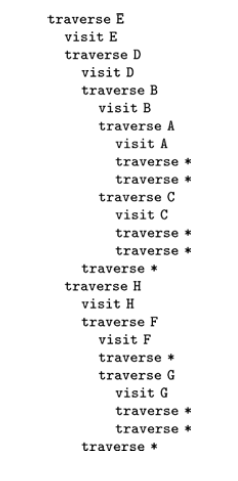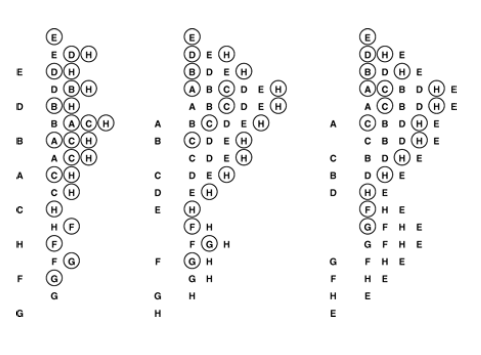6-Tree Traversal
Tree Traversal
This function takes a link to a trees as an argument and calls function visit with each of the nodes in the tree as arguments.
Recursive tree traversal
void traverse(link h, void visit(link)){
if(h==0) return;
visit(h);
traverse(h->l,visit);
traverse(h->r,visit);
}
There can be three order in which we can traverse a node :
- Preorder
- where we visit node, then visit left and right subtrees
- Inorder
- where we visit the left subtree, then visit the node, then visit right subtree
- Postorder
- where we visit the left and right subtrees, then visit the node.

Three traversals depicted in order
Preorder Stack Call(leftmost)

Doing inorder traversal is same as solving Towers of Hanoi.
Note doing the postorder traversal is equivalent to evaluating postfix expressions.
Non recursive implementation
void traverse(link h, void visit(link)){
stack<link> s(max);
s.push(h);
while(!s.empty()){
visit(h=s.pop());
if(h->r !=0) s.push(h->r); // TO ensure we don't push empty links
if(h->l !=0) s.push(h->l);
}
}
- For
preoder, push the right subtree , then left and then node - For
inorder, push the right subtree, then node and then left subtree. - For
postorder, push the node, then the right subtree, and then left subtree.
Picture of stack at different times

Level order Traversal
This strategy is based on reading top to down and left to right.

Remarkably, we can achieve it just by changing one word in the last program.
exchanging stack by queue does it
because we process nodes in the order they appear.